The LEGO universe is vast and complex, with a wealth of technical terms and abbreviations used by fans, collectors, and enthusiasts.
If you have ever come across unfamiliar terms such as Diorama, GWP, MIB, Stud, Baseplate, Bracket, or SNIR and have struggled to understand their meanings, this LEGO glossary is here to help.
This comprehensive guide includes definitions for a wide range of abbreviations and technical terms, as well as a list of index terms that you can click on to be immediately directed to the corresponding definition. From AFOL (Adult Fan Of LEGO) to EV3 and beyond, this glossary has you covered.
Abbreviations and terms
AFOL
It stands for the acronym of the phrase “Adult Fan Of LEGO”, and it is used for stating that a person who is a grown up adult is passionate about LEGO. AFOLs represents an enormous slice of the LEGO community. AFOLs collect particular sets dedicated to the adult audience, or are still investing their time in realizing or suggest sets to LEGO Ideas. The term AFOL has been introduced for the first time in 1995.
BL Studio
BL Studio is the abbreviations of “BrickLink Studio“, one of the most famous free software for design LEGO sets. Its interface allow to choose between almost every existing LEGO bricks and to assemble them as it is in real life. BrickLink Studio is often used by AFOL for creating a digital version of their personal sets. BrickLink Studio is recommended by LEGO itself for the creation of images with which to partecipate to the LEGO Ideas program.
B&P
It’s the acronym of Bricks & Pieces, an official LEGO service that allow you to buy a huge amount of bulk bricks.
Dark Age
With this term we intend that period of time in which the AFOL stop play with LEGO. Usually the “Dark Age” begins around 15 year old age, and it stops between 24 and 30 years old age. Once out of the “Dark Age”, the Adults Fan Of LEGO rediscover their love for LEGO bricks and they return to build and collect new sets.
Diorama
The term Diorama means a scenario of huge dimension, build up entirely with LEGO bricks. There are many LEGO Dioramas that became famous during the course of the years, with fans all over the world that reproduce places, scenes or shots of their personal favorite movies or TV-Shows.
EOL
Abbreviation for End Of Life, that means Retiring Soon. It is used to refer to those sets that are now close to being withdrawn from the market. You can find some LEGO EOL sets on this page.
GWP
Its the acronym of Gift With Purchase: from time to time, LEGO Shop offer some free gifts (little exclusive sets, polybag or limited gadget) with a minimum of expense or when buying a specific set. For instance, with the release of the Batmobile Set, users that bought it from the LEGO Shop also received a little set of the 1989 Batmobile Limited Edition for free. All the LEGO GWPs currently available are shown on this page.
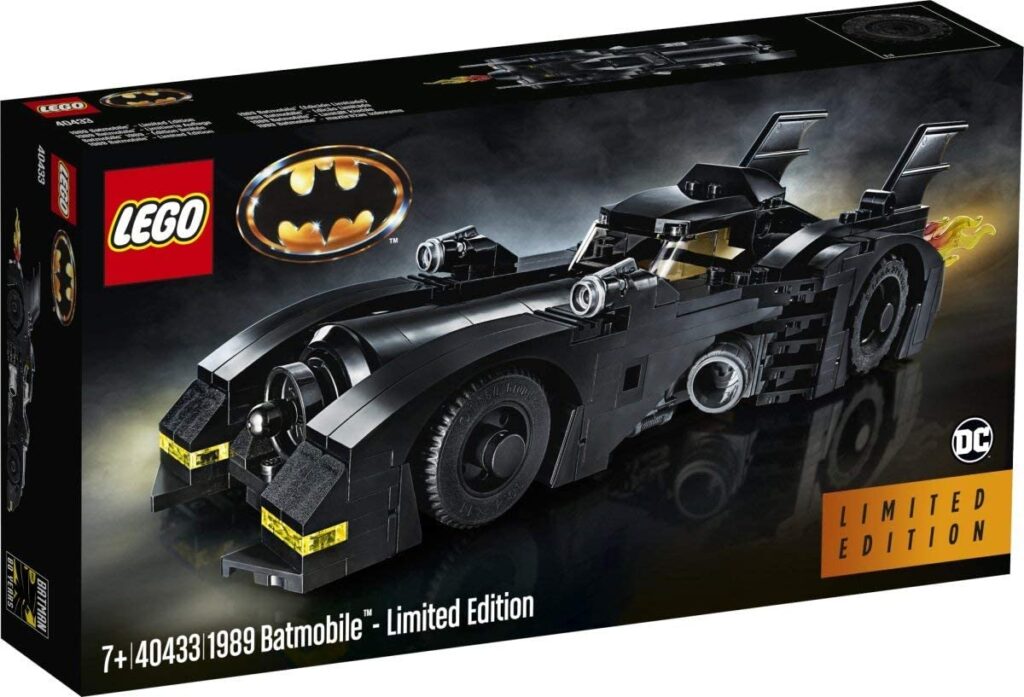
LCS
Its the acronym of LEGO Certified Store: they are store that sells only LEGO products, and that look exactly like a LEGO Store, but that are operated by a third company, external to LEGO. They cannot be mistaken with the LEGO Store, which are run and operated entirerly by the LEGO Group. If you want to see the complete LEGO Certified Stores and LEGO Stores, we recommend you to take a look at the dedicated page on LEGO official website.

LEGO Ideas
LEGO Ideas is the official LEGO program in which users (often AFOLs) can send their ideas for a set (if you want to take a look at the LEGO Ideas website, you can find it here). If the idea is loved and voted from at least 10.000 users, the project will be immediately taken into account by the LEGO team experts, which will evaluate if the idea can be effectively realized as an official set or not. Here you can find all the LEGO Ideas sets currently available for purchase.

LDD
It’s the acronym of LEGO Digital Designer, that used to be an official (and free) software that allowed you to build up models with digital LEGO bricks. From a while now, anyway, LEGO itself says that it doesn’t support as much as they want LDD and suggest to use softwares equally performant, such as BrickLink Studio.
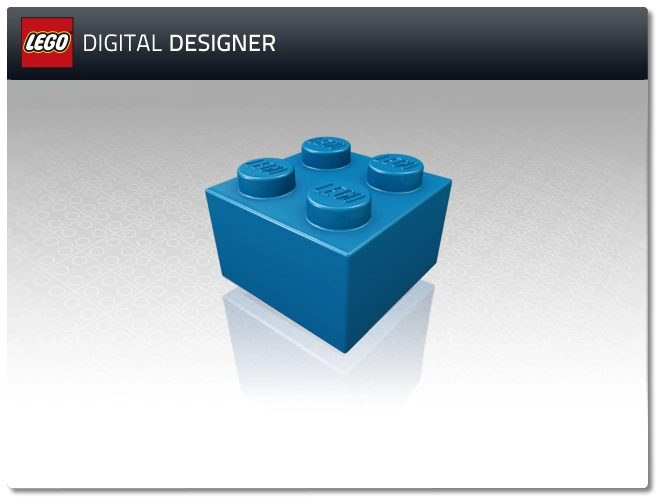
LUG
It’s the acronym of LEGO User Group. LUG is a community of LEGO fans who come together (both physically and online) by conducting activities and organizing local events, such as contests or building competitions.
MIB
From the english “Mint in the Box”, this acronym means that the product is new and set in an original box that, although, has been opened. Sometimes (in rare cases) can happen that the box has never been open, but that the seal has broken or detached due to wear and tear.
Microfiguers
They are the “micro” version of the Minifigures and have a very small dimension as they are formed from a single piece decorated with printed details. They are often included in large sets, perhaps to emphasize even more the size of the set itself, as happened for example with the LEGO NASA Saturn V set, or the LEGO Hogwarts set.
Minifigures
They are the famous “LEGO people” reproduced in a very various versions. They are often a reproduction of famous TV-shows or Movies of franchises such as Harry Potter, Lord of the Rings, Marvel, DC or The Simpsons (The official LEGO website has an entire section dedicated to the Minifigures).
LEGO also produces Series of Collectable Minifigures that can be purchased in closed and random bags.
One of the most rare and expensive of all is … Mr.Gold, a Minifigure that is completely chromed in gold and that has been introduced in 2013. Mr.Gold has only 5000 samples around the world, and it’s price (online) is over several hundreds of euros.
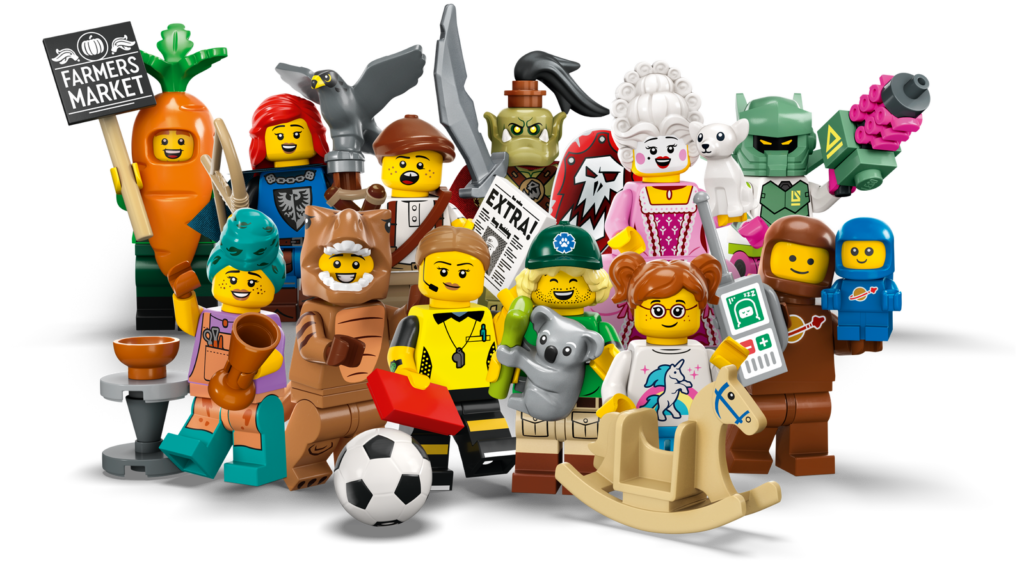
MISB
From the english “Mint in Sealed Box”, this term is used during the buying and sale process between LEGO fans for meaning that a set is new, never used and that comes with a sealed box.
MOC
Acronym of My Own Creation, it is used for identify any creation that has been realized by a LEGO fan with LEGO bricks. Are included in the term MOC also the creations realized starting from an existing official LEGO set.
MSRP
It’s an english term (Manufacturer’s Suggested Retail Price) used for show the full price given by a producer of a specific product. It is used in LEGO online selling process with set that are out of production. The official LEGO website is obviously the perfect website for knowing the price with which LEGO has commercialized the set.
OVP
From the german “Originalverpackung”, it means “used set” sold with original box.
PAB
Acronym of Pick a Brick, the official LEGO service that allow you to buy single LEGO bricks.
The pieces available are almost infinite, fortunately there is a “search” function where you can enter the name of the brick or its ID code (we recommend using the ID code for searching, much more effective than typing the name of the piece).
There are several filters for categories (e.g. Technic, Animal, food, wheels, etc.). Pick a Brick is available at this link.
Polybag
With “Polybag” we mean any type of bag in which there is a Minifigure or LEGO pieces. There are many different series (LEGO Batman, LEGO City, LEGO Super Heroes, LEGO Star Wars,exc.) and can contain exclusive Minifiguers, LEGO pieces or gadgets. Polybags are often offered as GWPs (Gift with Purchases). You can access the Polybag category on LEGO Shop here.
RRP
It’s the abbreviation of Recommended Retail Price. It mean the listing price of a set. The listing price of a specific set currently available it’s the price at which it is sold on the LEGO Shop.
TLG
It’s the acronym of The LEGO Group, the company based in Billund, Denmark. The company is still owned by the family of Kirk Kristiansen, who founded it in 1932.
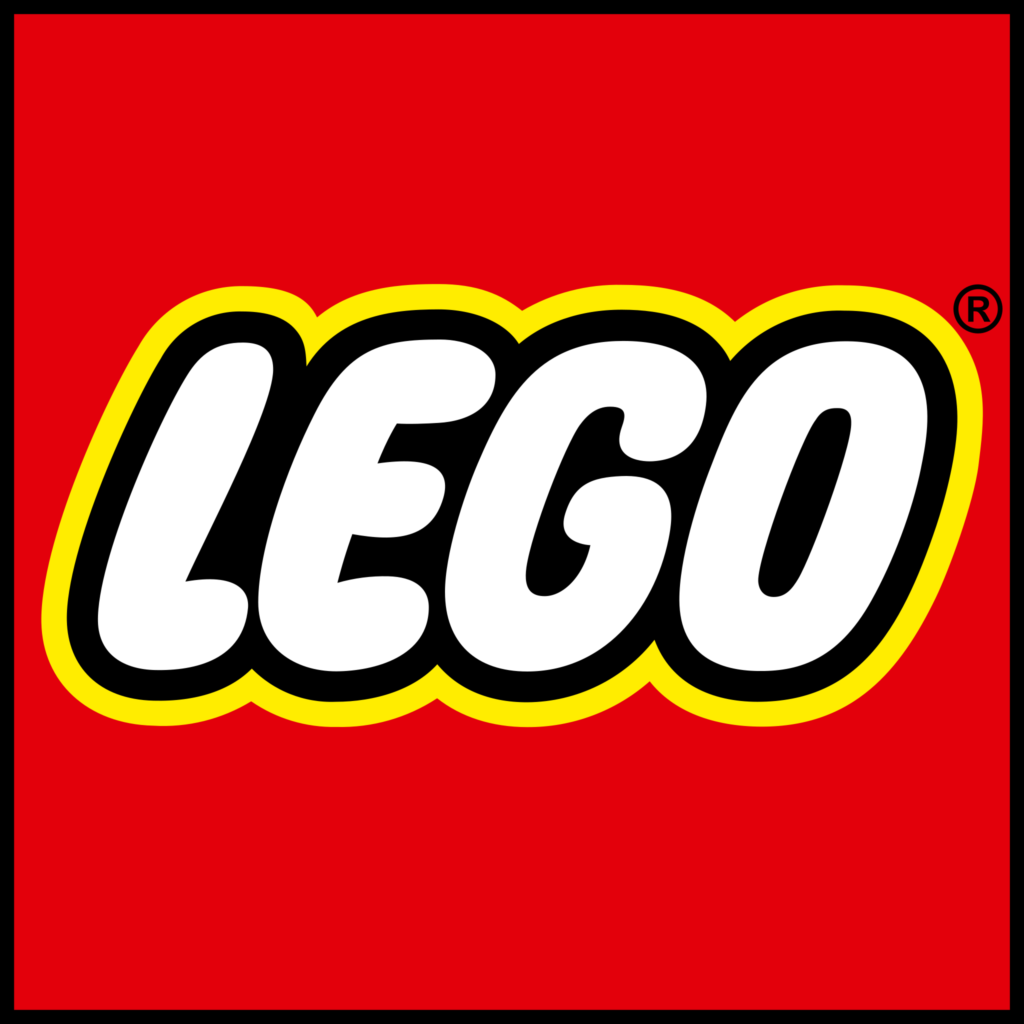
Technical Terms
ABS
Acronym for Acrylonitrile Butadiene Styrene, this is a type of high-performance plastic from which most LEGO bricks are made. This type of plastic allows the bricks to be printed very accurately and with a uniform, bright coloring.
More info on the composition of the bricks in the official section of the LEGO website.
Azmep
It is a construction technique by which mismatches, between two bricks or between two pieces in general, of half a Stud are made. Azmep is the German acronym for Aus Zwei Mach Eins Plättchen.
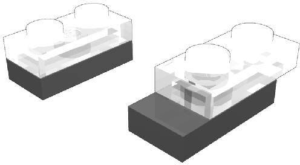
Azmep Clip
This is the technique by which two specific pieces (bar and arm) are hooked together. The “bar” type has a cylindrical element, while the “arm” type features a “clamp” capable of engaging with the “bar.”

Azmep Hinge
Azmep Hinge refers to the technique of construction using a hinge. The hinge often allows two pieces of different lengths to be joined together.
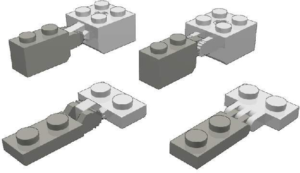
Baseplate
Baseplate is basically the category of all rectangular and thin pieces. They are often used as floors or horizontal areas such as landings or driveways. They are categorized according to their two main dimensions: for example, “Baseplate 32×32” means a square Baseplate of side 32 studs, but there are also rectangular ones, for example the “Baseplate 8×12.”
Bracket
This is the right-angle element, often consisting of a square 2×2 studs face and a rectangular 1×2 studs face. They are available in the Pick a Brick section by searching for them by their code.

Brick
It’s the classic brick of LEGO, the most famous one. The classic brick has dimensions of 6×2 studs
Brick Round
This is the large category of LEGO pieces with a circular or cylindrical shape. On the LEGO Shop, in the Pick a brick section, the selection is large.
Brick Decorated
This includes any LEGO brick that has details printed on one or more surfaces (e.g., details from a dashboard, numbered bricks from a Rally Set, Creeper from Minecraft sets, etc.).
Brick Headlight
It is the parallelepiped-shaped brick with a single stud on the upper face, with one side face set back slightly from the others, on which there is a stud.

DISH
Denotes the simultaneously circular and concave shaped elements , often used to make dishes or radar in space-themed sets.
EV3
This is the name of the LEGO brick that can be programmed either by computer or manually, to which various sensors (proximity or color detection for example) can be connected. It was introduced in the LEGO MINDSTORMS Education set. It features a display, a built-in speaker, a USB port and a mini SD card reader. The brick also supports connection via USB, Bluetooth and Wi-Fi with a computer, and has an interface for programming directly in the brick itself, as well as with PC software. It is powered by AA-type batteries or through the 2050 mAh rechargeable DC EV3 battery.
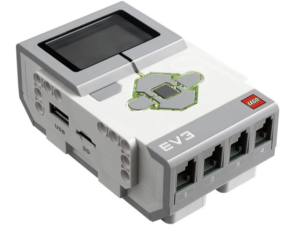
Fence
We denote by “fence” all those pieces that represent a fence, or a lattice pattern.
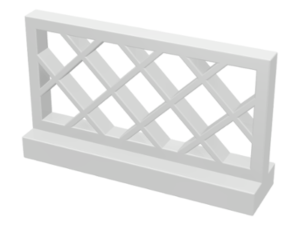
Hinge
It’s the classic LEGO hinge, in all its variants. It is usually formed by the union of two complementary pieces.
Hose
This is a generic flexible, tubular-shaped LEGO piece that is very common in LEGO Technic or Creator Expert sets, as it reproduces pipes or electrical wires very effectively.
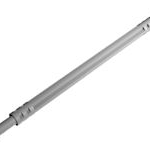
IR
Abbreviations of InfraRed, these are the special pieces that receive or emit infrared signals, often used to motorize Technic sets. They are also used in MINDSTORM series sets.
Jumper
Jumper refers to that piece of size 1 x 2 studs, with only one stud placed in the center of the top face. There is also a 2 x 2 size variant.
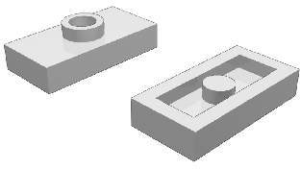
Powered Up
This is the line of Technic Series sets that features one or more motorized systems powered by stylus batteries. Often used to move mechanical and extendable arms, in LEGO Technic Series work machinery.
SNIR
It stands for Stud Not In a Row, which means mounted at angles other than the classic right angle, such as diagonally. A baseplate for example, which allows multiple pieces to be placed side by side along a row or column, also allows pieces to be mounted along one of its diagonals.
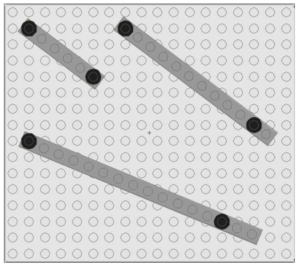
SNOT
An acronym for Stud Not On Top, it is a construction technique that involves assembling bricks with studs oriented in multiple directions, not just upward. This is an advanced and extensive construction technique; you can observe some examples in the image below. This technique is widely used in LEGO Technic Sets, Creator Expert or even in Sets with a lot of detail, such as the LEGO Ideas Central Perk Set.
Stud
It is perhaps the element that most characterizes a LEGO brick. The term “Stud” simply means that small disc-shaped element that protrudes from a brick. For example, a Brick has 6 studs (or also knobs). Since Studs are “at the base” of the whole LEGO mechanism, they are also used as a unit of measurement: for example, a “Baseplate 32×32” is a square piece of side 32 Studs.

Slope
Represents the category of bricks that have a slanted side, as if it were a ramp. These are often used to recreate roofs or angular elements.
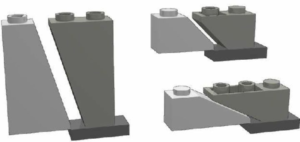
Slope Inverted
They are the variant of SLOPEs and have a smaller lower base than the upper base.
Tile
“Tile” refers to all those pieces that have a “smooth” top face, as if it were a tile. There are different sizes of them, e.g. 2×1 studs, 1×4 studs, 1×8 studs, etc.
UCS
It stands for Ultimate Collectors Series, or LEGO sets designed with an extremely high level of detail, designed for the most discerning collectors.
They are very expensive sets, and there are currently only two sets available for purchase from the LEGO Shop, but in the past there have been many sets that have fallen into this category.
In conclusion, the LEGO universe is filled with a variety of technical terms and abbreviations that can be confusing for those unfamiliar with them. This LEGO glossary has provided definitions for a wide range of terms and abbreviations, making it easier for LEGO fans, collectors, and enthusiasts to understand and communicate with each other. Whether you are a seasoned AFOL or just starting out on your LEGO journey, this glossary is a valuable resource for understanding the complex world of LEGO bricks and sets.
This LEGO Glossary is constantly updated. If you would like to point out any terms we have forgotten, or suggest any correction, please contact us.




